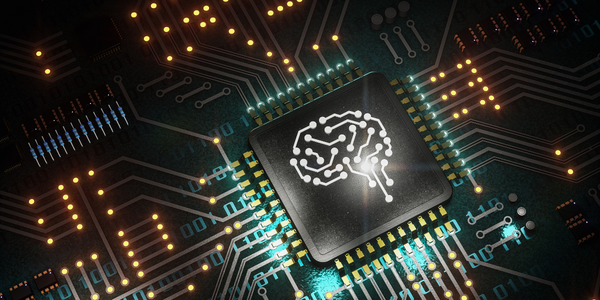公司规模
Large Corporate
地区
- Asia
- Europe
国家
- Worldwide
产品
- EfficientIP solution
技术栈
- DNS
- DHCP
- LDAP
实施规模
- Enterprise-wide Deployment
影响指标
- Cost Savings
- Productivity Improvements
技术
- 网络与连接 - 网络管理和分析软件
适用行业
- 半导体
适用功能
- 商业运营
服务
- 系统集成
关于客户
STMicroelectronics is the fifth largest semiconductor company in the world. The company has a worldwide network of strategic alliances, key clients, and technological developments. It has less than 50,000 employees divided into 16 Research & Development units, 39 design and practical application centers, 13 production sites, and 78 points of sales spread in 36 countries. The company's objective was to have a centralized management interface for all its DNS and DHCP servers that would allow it to have a clear vision of the subnets it uses.
挑战
STMicroelectronics, a global semiconductor solutions specialist, sought to centralize the management of its DNS and DHCP servers to gain a global vision and fine supervision of its worldwide architecture. The company's organization, with less than 50,000 employees spread across 36 countries, justified this need for a global vision. The previous management of DNS and DHCP servers was decentralized and heterogeneous, leading to the need for a global project to control the entire system.
解决方案
STMicroelectronics chose EfficientIP's solution to manage its DNS and DHCP servers. The solution was chosen based on several pragmatic criteria: it could manage every type of DNS vendor, take into account LDAP directories, allow the administration of heterogeneous platforms, and manage everything through a web interface. The solution allowed STMicroelectronics to control all its networks, especially in a joint venture context with its partners or customers. Administration rights were allocated on a local level for basic operations, with access restricted to the servers that teams were allowed to manipulate. More advanced level 2 administration allowed for the addition of new subnets dedicated to DNS and DHCP management.
运营影响

Case Study missing?
Start adding your own!
Register with your work email and create a new case study profile for your business.
相关案例.
Case Study
KINESYS Semiconductor Factory Automation Software
KINESYS Software provides both Integrated Device Manufacturer (IDM) and Original Equipment Manufacturer (OEM) customers world-class software products and solutions for advanced wafer and device traceability and process management. KINESYS offers state of the art database technology with a core focus on SEMI standards. KINESYS’ challenge was to make back-end processing failure-free and easy to use for clients while supporting licensing models more adaptable to changing industry needs.

Case Study
Modular AI Defect Inspection Solution for Efficient Semiconductor Equipment Upgrades
Smasoft Technology Co., Ltd., a System Integrator that develops industrial automation software and offers AI application solutions, was commissioned by a semiconductor equipment manufacturer to implement AI inspection features into their Extreme Ultraviolet Light (EUV) pod inspection machines. The existing AOI software in the EUV pod inspection machines could only identify defective products but could not trace the cause of the defects. The manufacturer wanted to upgrade their machines with AI features to make the products more useful. The AI solution needed to complete the analysis of 380 images for a single pod within two minutes and inspect different materials simultaneously. This required multiple sets of AI models for interpretation. The solution also needed to be installed in a cabinet in the lower half of the machines, which posed a challenge due to the limited space. Smasoft needed to purchase a hardware solution with strong computing performance, stable operation, compact size, and flexible configuration to overcome these challenges.

Case Study
Optimizing Semiconductor Manufacturing Yield with IoT
A large U.S.-based manufacturer of high-performance semiconductors was facing a significant challenge in optimizing the manufacturing process of its wireless products. The company, which designs and delivers a broad set of cutting-edge products including radio frequency filters, amplifiers, modulators, attenuators, and more, was experiencing lower than expected overall yield in some of its most complex products. This was affecting the company's productivity and profitability, and there was a need for a solution that could predict low-yield wafers early in the process and identify process improvements to increase overall yield.
Case Study
Rapid Hybrid Services Deployment for Global Semiconductor Company
The U.S. manufacturer of engineered materials, optoelectronic components, and semiconductors was focused on growth through mergers and acquisitions (M&As). In 2019–2020, it acquired a global electronics firm and needed immediate connectivity and visibility into the acquired firm’s geo-distributed operations. The company had a highly compressed timeline, with only days to integrate the firm’s DDI operations, while deferring a full network migration to a future date. The company was actively engaged in acquiring and merging strategically aligned companies as a key global growth strategy. The company needed to rapidly integrate its new operations, which included significant remote locations in Asia. The company turned to Infoblox to quickly design a highly secure, available, and reliable solution that could deliver full visibility into new sites. It needed dynamic scalability to accommodate its growing operations and the ability to unify a disparate, geo-diverse infrastructure.

Case Study
Sony Italia's Server Consolidation: A Cost-Saving Success
Sony Italia, a branch of the global electronics giant Sony Corporation, was facing a significant challenge with its IT infrastructure. The company had consolidated most of its IT infrastructure into two data centers in the U.K, but Sony Italia opted to maintain its local server infrastructure for high performance and ease of maintenance. However, as data volumes and user numbers grew, the servers began to experience reduced performance and reliability. The company had 30 physical servers, but with limited budgets, replacing all of them was not feasible. Additionally, Sony Italia was concerned about the increasing heat output and electricity consumption in the data center. The company had already virtualized about half of its infrastructure, but needed a more cost-effective solution to extend these benefits.








